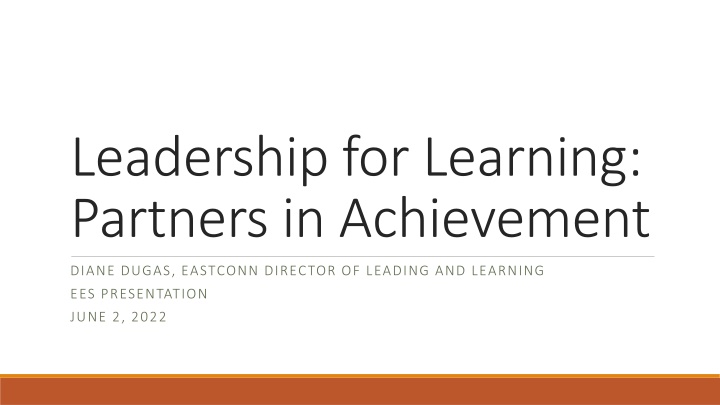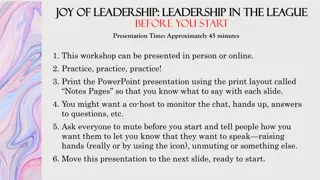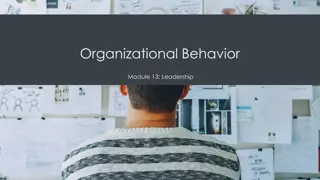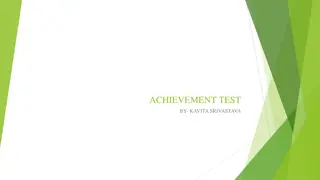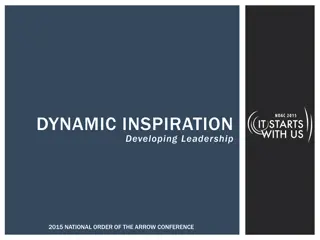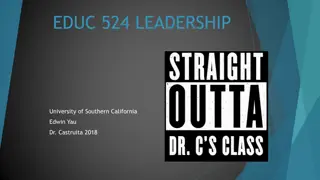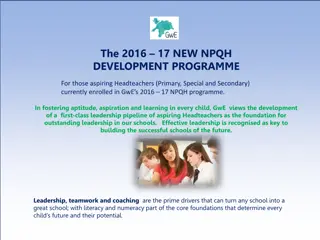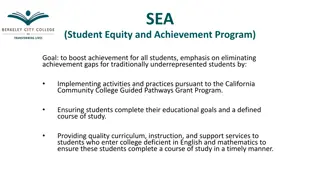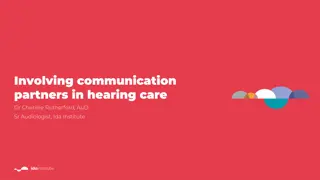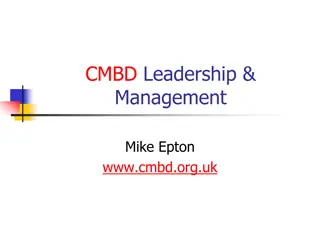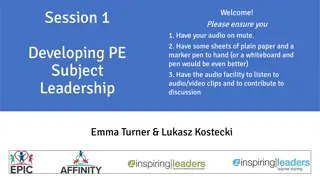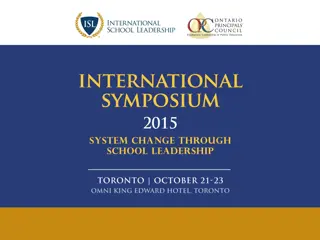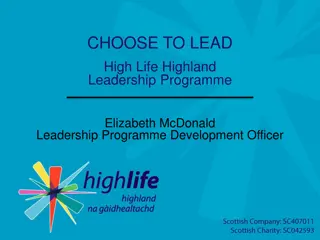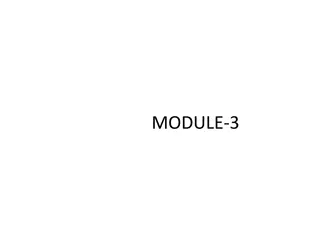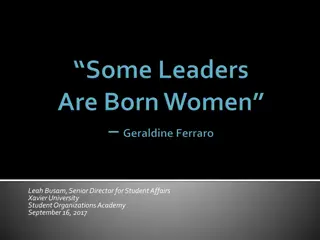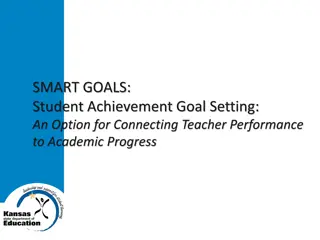Leadership for Learning: Partners in Achievement Presentation
This presentation by Diane Dugas, the Director of Leading and Learning at EASTCONN, delves into the importance of leadership development in education. It discusses how central office support enhances leaders' capacity for transformational advancements and what effective leadership learning entails. Findings from the Wallace Foundation emphasize the substantial impact principals have on students and schools. Key areas such as instruction-focused interactions, fostering a productive climate, promoting collaboration, and strategic resource management are highlighted as crucial for achieving positive school outcomes.
Download Presentation

Please find below an Image/Link to download the presentation.
The content on the website is provided AS IS for your information and personal use only. It may not be sold, licensed, or shared on other websites without obtaining consent from the author.If you encounter any issues during the download, it is possible that the publisher has removed the file from their server.
You are allowed to download the files provided on this website for personal or commercial use, subject to the condition that they are used lawfully. All files are the property of their respective owners.
The content on the website is provided AS IS for your information and personal use only. It may not be sold, licensed, or shared on other websites without obtaining consent from the author.
E N D
Presentation Transcript
Leadership for Learning: Partners in Achievement DIANE DUGAS, EASTCONN DIRECTOR OF LEADING AND LEARNING EES PRESENTATION JUNE 2, 2022
Essential Questions: Why is leadership development important? How does central office support the capacity of leaders to lead transformation advancements? What does effective leadership learning look like?
Leaders do not create value directly. They deliver results indirectly, by enabling others to achieve more. It is normally impossible to separate the contributions of the leader and the team members. This suggests that, rather than thinking in terms of either/or, we need a balance of investments in developing great principals and great teachers. How Principals Affect Students and Schools, Wallace Foundation, February 2021
Replacing a principal at the 25th percentile in effectiveness with one at the 75th percentile can increase annual student learning in math and reading by almost three months. How Principals Affect Students and Schools, Wallace Foundation, February 2021
Principal Facts: Why Leadership Supervision and Evaluation is so Important
Wallace Foundation Synthesis of Literature Identifies four interrelated domains of behaviors and practices that integrate instruction, people, and organizational skills to produce school outcomes. 1. Engaging in instructionally focused interactions with teachers, 2. Building a productive climate, 3. Facilitating collaboration and professional learning communities, and 4. Managing personnel and resources strategically
Principal Skills and Behaviors to Improve School Outcomes
Leadership Teams: Partners in Inquiry, Learning and Continuous Achievement NESTED STRUCTURES AND SYSTEMS: OTHER LEADERS WHO NEED SUPERVISION AND EVALUATION TO ENSURE RESULTS: Leadership Induction Modeling Collaboration Explicit Modeling Leadership Meetings Assistant Superintendent Shared Leadership of Professional Learning Director of Curriculum Strategic Focus/Coherence and Simplicity Director of Pupil Services Leadership for Learning Frameworks articulate the organizational structure Leadership capacity to give effective feedback Improve Data Analysis/Celebrate results
Challenges the status quo Builds trust through clear communication and expectations Builds commonly owned plans for success Focuses team over self Has a high sense of urgency for achieving sustainable results Commits to continuous improvement for the organization and self Builds external networks and partnerships Competencies of High-performing Leaders Lyle Kirtman/Michael Fullan
Driving Inquiry Questions What do we want leaders/teachers/students to know and be able to do? (Standards, POG) How will we know when they get it? (Observation/Rounds/ Student Assessment, Multiple measures of data) What will we do for leaders/teachers/students who aren t there yet? (Interventions) What will we do for leaders/teachers/students who are there or get it? (Deep Learning/Application)
Portfolio Approach to Continuous Advancement I. Problem of Practice Question/Theory of Action II. Target Outcomes III. Strategies and Supports: Action Plan and Professional Learning Plan IV. Evidence and Outcome/Results
I. Inquiry Question/Theory of Action What professional experiences have you had that led you to this question? What data do you from practice that prompted this question? How does your question align with the district and school strategic goals? What research supports your question/TOA? What professional learning will help to inform your inquiry?
II. Target Outcomes III. Strategies and Supports A statement of professional goals, strategies, and supports for improving practice and student learning Identify goals for teacher growth and development of learners State your professional goals for your own growth and development What is the action plan? What high leverage, research based strategies, structures, systems will you apply? What supports are needed (from central office, others) to implement?
IV. Evidence and Outcomes/Results How were results measured? What impact did your learning have on the outcomes/results? What impact did your intentional leadership have on the outcomes/results?
Principals really matter. Indeed, given not just the magnitude but the scope of principal effects, which are felt across a potentially large student body and faculty in a school, it is difficult to envision an investment with a higher ceiling on its potential return than a successful effort to improve principal leadership. How Principals Affect Students and Schools, Wallace Foundation, February 2021
Thank you Diane Dugas EASTCONN Director of Leading and Learning EASTCONN Schools Superintendent ddugas@eastconn.org 860-324-9491
